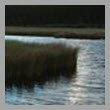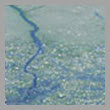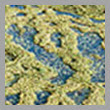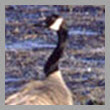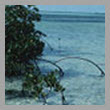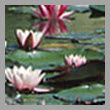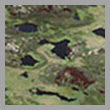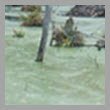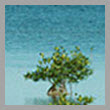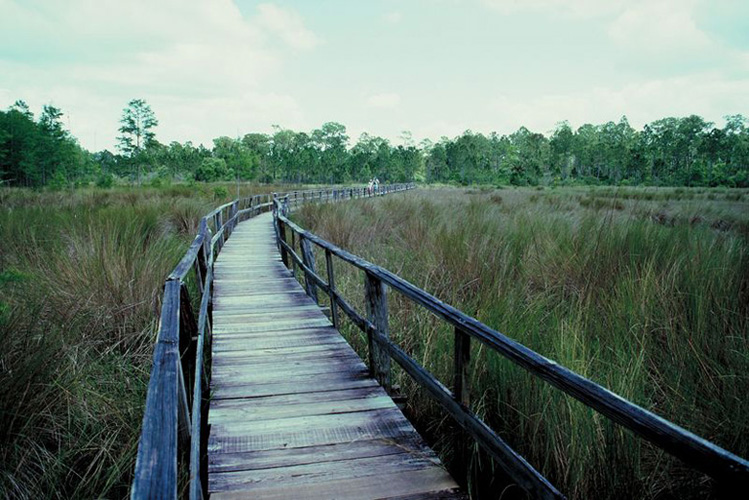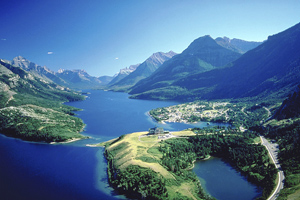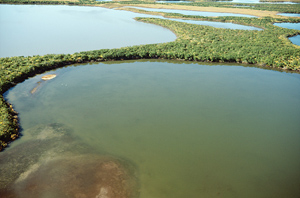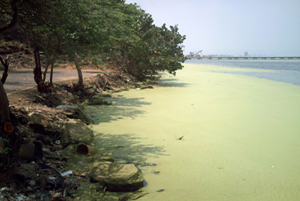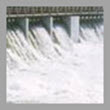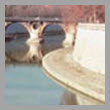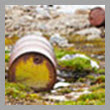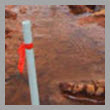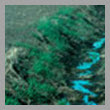Wetlands
Removing the coastal wetlands in New Orleans took a terrible toll. What other impacts have humans had on marine ecosystems? Look through these images to learn about the ways in which humans contribute to the degradation and destruction of marine ecosystems and how we can help return them to their healthy state. Read the questions then click on the Answer button to check the answer.
1. After browsing through this photo gallery, what are some common features of wetlands?
2. What are some differences between the types of wetlands depicted?
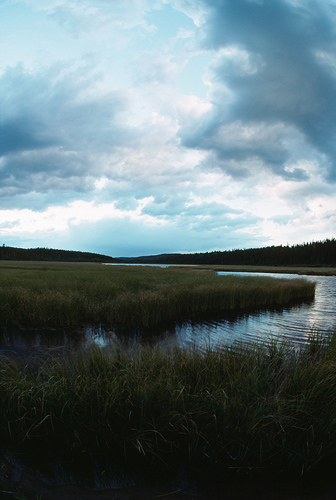
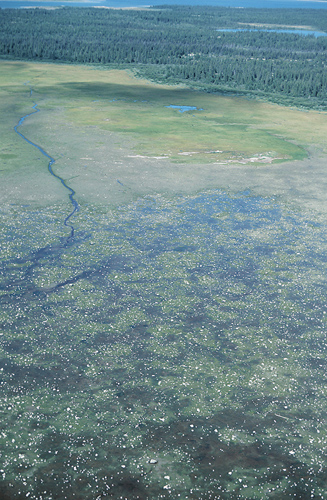

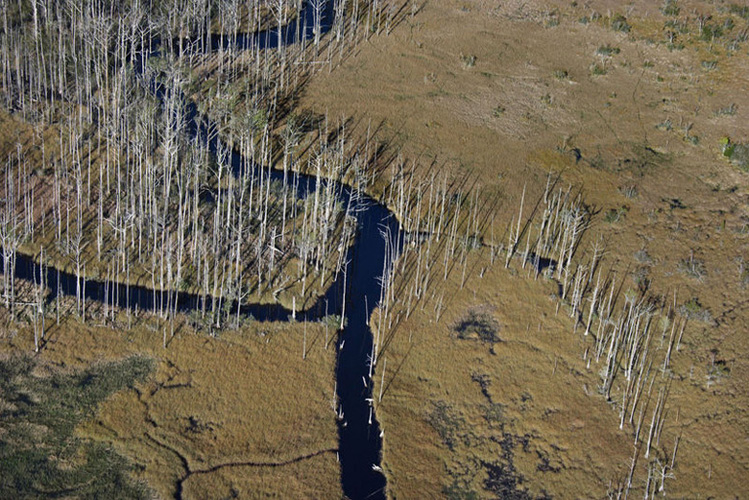
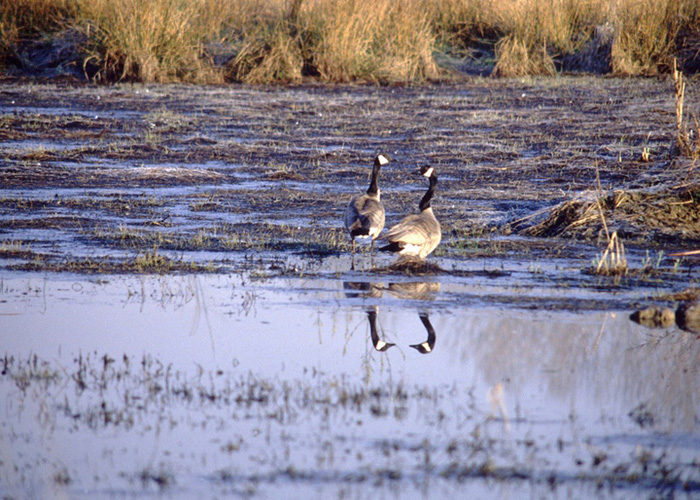

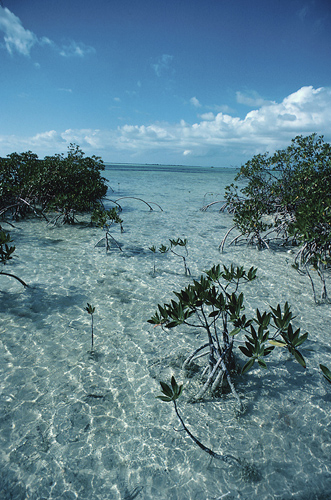
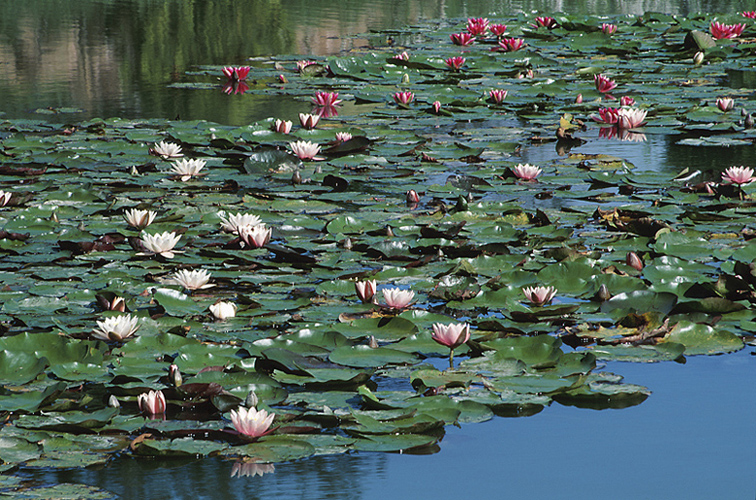
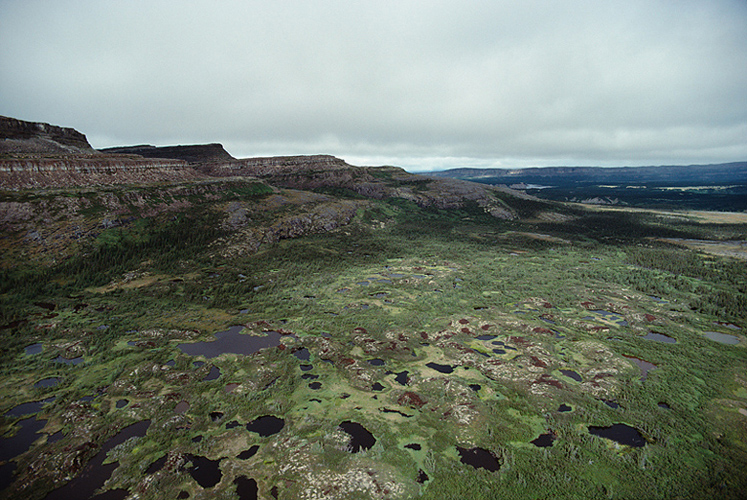
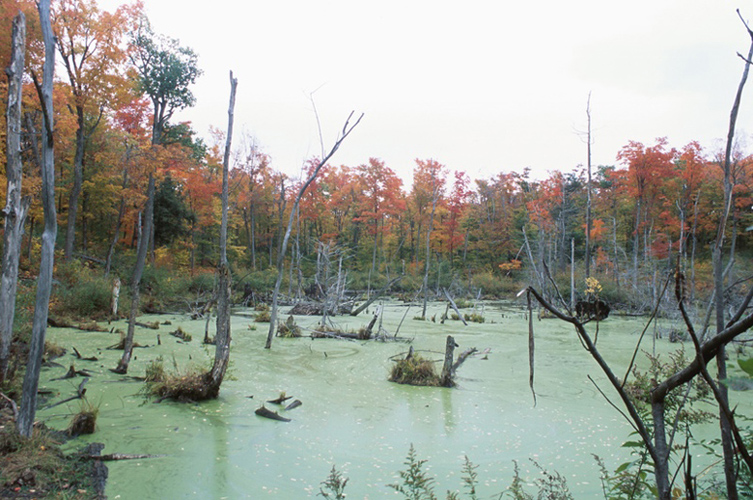
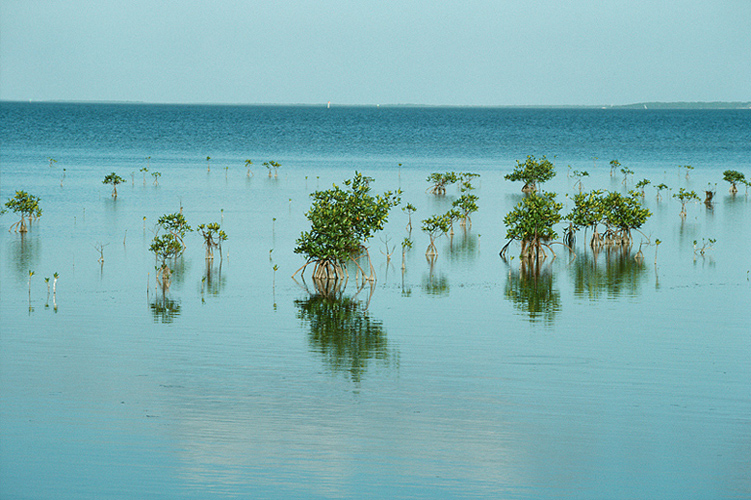
Earth’s Sponges
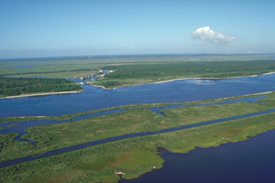 Wetlands were long considered useless, disease-ridden places. However, advances in environmental science research have dismantled that view, replacing it with data showing that wetlands are among the most productive ecosystems in the world, with many benefits to our health and safety and to the normal functioning of surrounding ecosystems. They can be thought of as Earth’s sponges, holding and cleaning the planet’s fresh water.
Wetlands were long considered useless, disease-ridden places. However, advances in environmental science research have dismantled that view, replacing it with data showing that wetlands are among the most productive ecosystems in the world, with many benefits to our health and safety and to the normal functioning of surrounding ecosystems. They can be thought of as Earth’s sponges, holding and cleaning the planet’s fresh water.
(source: http://commons.wikimedia.org/wiki/ File:Penrhos_Coastal_Park_-_geograph.org. uk_-_240406.jpg)
Wetlands are vital, highly productive ecosystems. They filter toxic wastes and pollutants and reduce flooding and erosion by absorbing storm water and overflow from lakes and releasing it slowly. Wetlands help maintain biodiversity by providing habitat for many species and providing us with valuable products like shellfish, rice, cranberries, and timber. They replenish streams during dry periods and help to recharge groundwater supplies. In addition, they are often popular recreational areas for birdwatchers, boaters, anglers, and other nature lovers.
Lakes, for Goodness Sakes!
Watersheds often include high mountain streams, meandering rivers, groundwater, and wetlands. What are we forgetting? Lakes! Lakes exist all over the world, from tropical rain forests to dry deserts, and contain layers supporting a wide variety of life. Check out the image below to learn more about the life zones of lakes. You should be able to find and define four distinct layers in the lake.
Text Version
Human Impacts on Freshwater Ecosystems
We’ve seen how much freshwater ecosystems do for us, but what have we done to them? Sadly, humans have degraded freshwater ecosystems in three major ways:
- Pollution from Cities and Farms
- Fragmentation from Dams, Canals, Levees, and Dikes
- Destruction for Building Cities or Farms
Take a look through this galleria to find out more about how human activities damage freshwater ecosystems and what you can do to help. Visit the EPA website or more information on impacts to freshwater systems and water pollution.
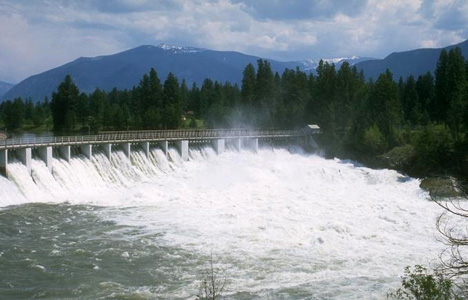 It is estimated that worldwide there are over 40,000 large dams that block some of the earth’s largest rivers. A dam in a waterway or watershed has far-reaching implications, including changing the entire circulation of the river, damaging valuable floral and faunal habitats, destroying breeding areas, especially for fish, and often causing erosion due to changing water flow. In addition, some functionality of wetlands is lost as temperature and turbidity are changed in the natural water supply. The US is the second only to Zimbabwe in the number of large dams.
It is estimated that worldwide there are over 40,000 large dams that block some of the earth’s largest rivers. A dam in a waterway or watershed has far-reaching implications, including changing the entire circulation of the river, damaging valuable floral and faunal habitats, destroying breeding areas, especially for fish, and often causing erosion due to changing water flow. In addition, some functionality of wetlands is lost as temperature and turbidity are changed in the natural water supply. The US is the second only to Zimbabwe in the number of large dams.
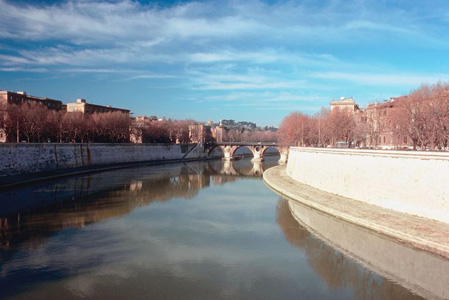 Canals, coupled with dams, are responsible for fragmenting more than 40% of the earth’s largest rivers, destroying fragile habitat for both animals and plants. Water flow is often reduced or stagnant in many of these areas and oxygen levels can become low or depleted. These water systems are often disconnected from the natural wetlands and are subject to flooding during storms. Canals also can become overloaded with runoff and pollutants from towns and cities, leading to eutrophication.
Canals, coupled with dams, are responsible for fragmenting more than 40% of the earth’s largest rivers, destroying fragile habitat for both animals and plants. Water flow is often reduced or stagnant in many of these areas and oxygen levels can become low or depleted. These water systems are often disconnected from the natural wetlands and are subject to flooding during storms. Canals also can become overloaded with runoff and pollutants from towns and cities, leading to eutrophication.
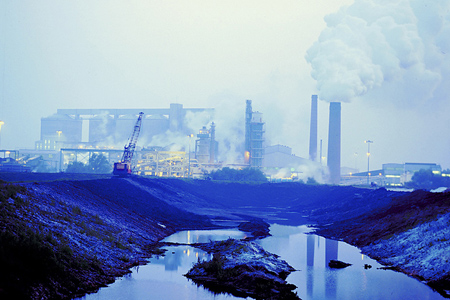 Often, factories and power plants need a source of water in order to function. This in turn affects the freshwater system where they are located. Withdrawal of water from the river or stream alters the natural flow. After its use, the water can be returned to the aquatic system, but it is then often warmer in temperature, disturbing the flora and fauna, which are adapted to natural seasonal temperatures of the water. In addition, a certain amount of contaminants may be discharged into the stream. Often it is difficult to monitor and locate the source of the pollution if a river or stream is in a well populated or industrial area.
Often, factories and power plants need a source of water in order to function. This in turn affects the freshwater system where they are located. Withdrawal of water from the river or stream alters the natural flow. After its use, the water can be returned to the aquatic system, but it is then often warmer in temperature, disturbing the flora and fauna, which are adapted to natural seasonal temperatures of the water. In addition, a certain amount of contaminants may be discharged into the stream. Often it is difficult to monitor and locate the source of the pollution if a river or stream is in a well populated or industrial area.
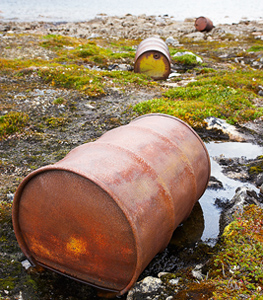 Illegal dumping of solid materials leads to detrimental effects on freshwater systems. Many of these materials are toxic and can leak into water supplies. The deterioration of the containers as well as the material inside can alter the chemistry of the water as well as destroy breeding habitats for animals and plants alike.
Illegal dumping of solid materials leads to detrimental effects on freshwater systems. Many of these materials are toxic and can leak into water supplies. The deterioration of the containers as well as the material inside can alter the chemistry of the water as well as destroy breeding habitats for animals and plants alike.
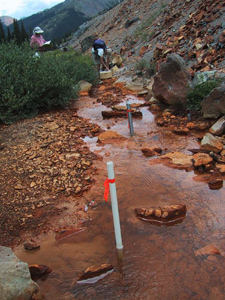 Mining and extraction of minerals from within rock layers can disturb freshwater systems, adding toxic materials and sediments to mountain streams. These mine tailings are being extensively monitored by the US Geological Survey to determine the quality of this water as it returns to the human water supply.
Mining and extraction of minerals from within rock layers can disturb freshwater systems, adding toxic materials and sediments to mountain streams. These mine tailings are being extensively monitored by the US Geological Survey to determine the quality of this water as it returns to the human water supply.
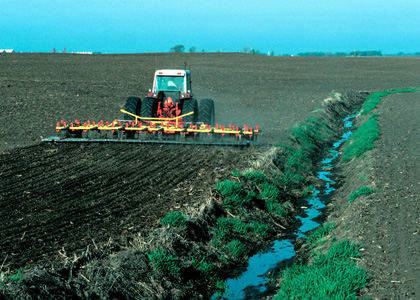 This farm in Iowa has failed to put a conservation buffer between the cropland and the small stream that runs through its property. This makes it more likely for runoff of fertilizers and other chemicals to degrade the stream. Erosion and sedimentation are also more likely to take place, and there is no remaining habitat for wetland organisms.
This farm in Iowa has failed to put a conservation buffer between the cropland and the small stream that runs through its property. This makes it more likely for runoff of fertilizers and other chemicals to degrade the stream. Erosion and sedimentation are also more likely to take place, and there is no remaining habitat for wetland organisms.
Crossword: Review
EclipseCrossword © 2000-2013
Welcome!Click a word in the puzzle to get started. Congratulations!You have completed this crossword puzzle. If you would like to be able to create interactive crosswords like this yourself, get EclipseCrossword from Green Eclipse—it's free! |
Printable Version
Printable Version Answer Key
Unit 3 Review
Let's review some important concepts.
The rate at which some amount of biomass can be made out of solar energy is called gross primary productivity (GPP).
The rate at which producers use photosynthesis to produce chemical energy minus the rate at which they use some of this chemical energy for respiration is called net primary productivity (NPP).
Terrestrial regions characterized by similar climate, soil, plants, and animals. Examples include rain forest, desert, and grasslands
This is the impact of weather moving over the mountains, dumping the precipitation on the windward side of the mountain leaving the leeward side dry, essentially in a "shadow".
This is the natural warming of the earth’s atmosphere caused by heat-trapping gases that do not permit infrared radiation emitted from the earth’s surface to pass through the atmosphere and escape into space.
Prevailing winds in the tropics change directions and begin to blow in the opposite direction. Upwellings are shut down. This change in ocean temperatures causes changes in the global weather and climate patterns.
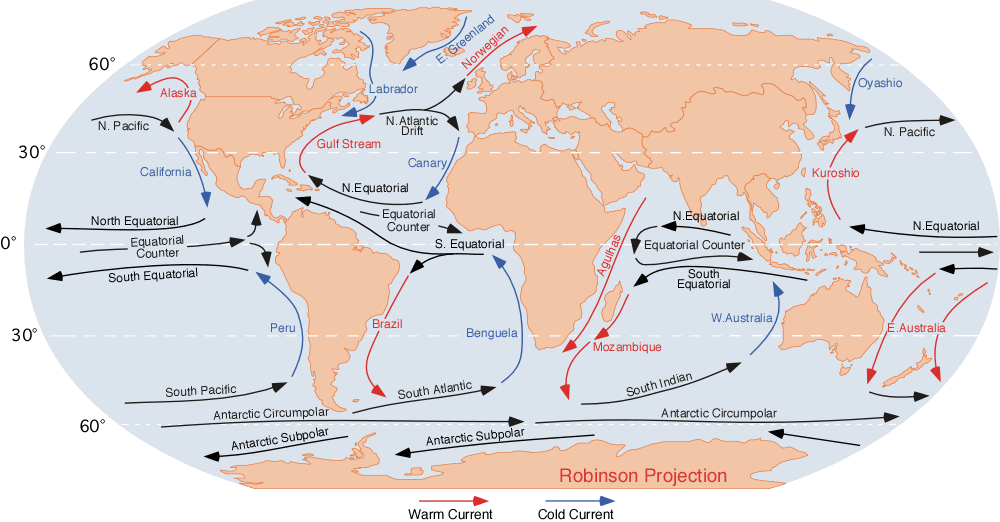
Public domain. U.S. government publication.
Ocean currents move heat around the earth. Currents are warmer at the equator and cooler at the poles. Uneven heating of the earth drives the winds and the currents.
Earth's rotation, uneven heating of the earth, and the properties of air, water and soil control the climate.
The main difference is time. Climate is the long term general pattern of participation and temperature. Weather is a short term forecast of precipitation and temperatures.
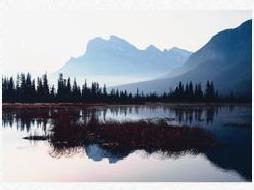
Types of lakes include Oligotrophic( low on nutrient, clear, cold);Eutrophic (high levels of nutrients, high diversity);Mesotrophic (moderate levels of nutrients); Hypertrophic (excessive levels of nutrients caused by human activities).
The littoral zone is the top layer of the lake that has lots of sunlight and high biodiversity. Limnetic zone is close to shore and is home to plankton and photosynthetic organisms. The profundal zone is cold and too dark for photosynthesis, and the benthic zone is at the bottom with decomposers
Wetlands are highly productive ecosystems. They filter toxic wastes and pollutants and reduce flooding and erosion by absorbing storm water and overflow from lakes.Wetlands help maintain biodiversity and help recharge ground water.
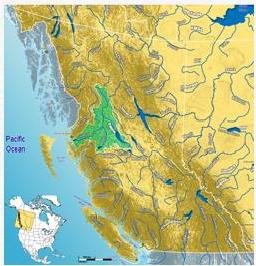
A watershed is all the water in an areas that drains into a common outlet. It is classified into a source zone, transitional zone and a floodplain zone.
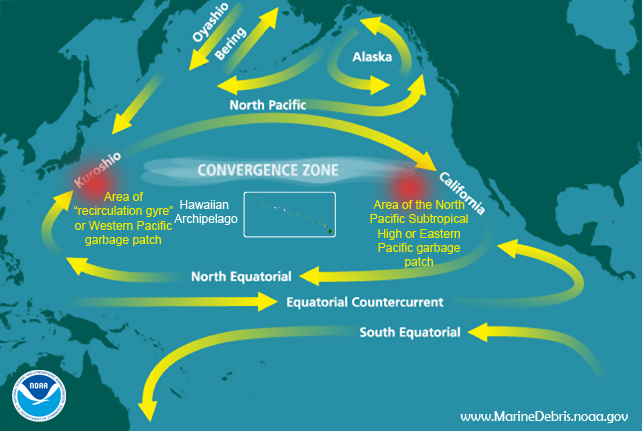
This diagram shows an area of convergence where garbage collects in the Pacific. There are convergence zones in all the oceans and waste material gathers there as small confetti sized particles that are not easily cleaned up. They are ingested by fish and passed up the food chain.
The coastal areas are the most productive because they receive the majority of sunlight and nutrients compared to other parts of the ocean. They contain 90% of all marine species and are the locations for protective mangrove forests, barrier islands, and coastal wetlands.
Organisms in the neritic zone live near shore and have adaptations that allow them to thrive in changing conditions. They also enjoy an abundance of food supported by the high nutrient levels..Kelp forests and coral reefs are examples of neritic ecosystems.
They can be classified into two groups, plankton (Greek for ‘drifting’) and nekton (Greek for ‘swimming’).
The photic (or sunlight) zone, the dysphotic (or twilight) zone, and the aphotic (or midnight) zone are the life zones of the ocean based on the amount of sunlight they receive.
97.8% of the water on earth is saltwater, while only 2.2% is freshwater! Over two-thirds of the freshwater is tied up in polar ice caps and glaciers. Freshwater lakes and rivers make up only 0.009% of water on Earth and groundwater makes up 0.28%.
The continental margin is the underwater plain that connects the continents and the ocean floor. It is divided into three parts: the continental shelf, the continental slope, and the continental rise.
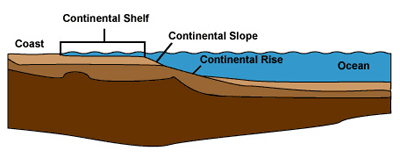
This is a concept proposed by Malthus which states that there is a certain number of people that the earth can support and be sustainable. Malthus proposed a limit to the human population which was very controversial.
Humans were able to move into different climate zones and adapt to the changes required there. Modern agriculture and technology also contributed to the growth in the human population. More recently medical advanced have allowed us to live longer healthier lives.
Birth rates, death rates, immigration and emigration all impact population size.
Replacement fertility rate is the average number of children a couple needs to have in order to replace themselves in a population. This is slightly over 2, varying from 2.1-2.5 in developing countries, due to the fact that many children will die at a young age and never reproduce.
Total fertility rate or TFR is the average number of children a woman has during her reproductive years. Although the TRF has declined from 6.2 to 2.8 children in developing countries, this number still contributes to an increase in the human population since it exceeds the replacement fertility rate.
Life Expectancy- the average number of years a newborn can expect to live in a particular country or region. Infant Mortality Rate- the number of babies out of every 1000 born, who die before they turn 1.
Age structure diagrams break down the number of males and females into age groups (such as 25-30 years old, 31-35 years old, etc.) or age categories (prereproductive, reproductive, and postreproductive). This will help to project current and future population levels.
As the human population grows there is a higher demand for products and services. This may outpace the natural supply and become unsustainable.
Text version to make flashcards.
Reading Guide
As you read your text, keep an eye out for the answers to the following questions. Use the reading guide worksheet to take notes as you go along.
- What are the main aquatic life zones in saltwater and freshwater systems?
- What are the key factors determining biodiversity in each aquatic life zone?
- Why are marine life zones important?
- How have human activities affected marine ecosystems?
- Why are freshwater ecosystems important?
- How have human activities affected freshwater ecosystems?
 Graded Assignments
Graded Assignments
Congratulations on completing this section! In this section you learned about:
- Biological, chemical, geological, and physical components of saltwater and freshwater life zones.
- The ecological and economic importance of aquatic ecosystems.
- How human activities impact aquatic ecosystems.
Please return to your Schoology classroom L3 - Aquatic Biodiversity folder to complete any graded assignments for this section.
KC Distance Learning. All rights reserved. Wrapper Updated 2021, by DVHS.

